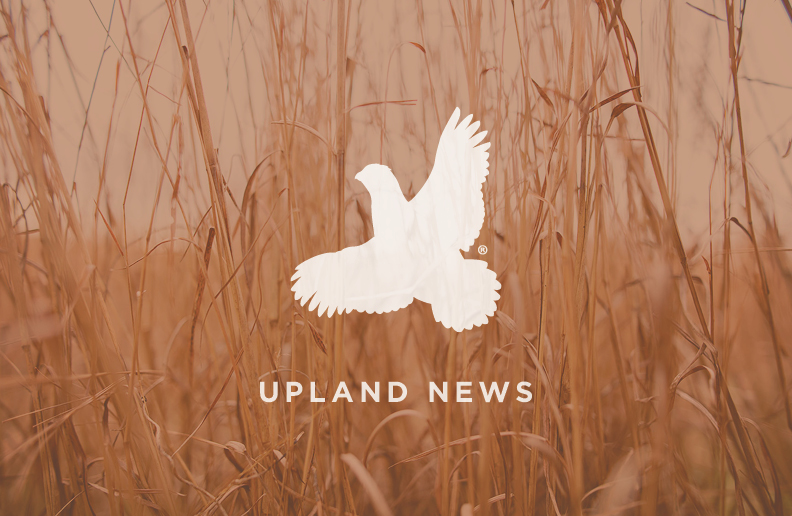Wildlife Biologist Studying How Much Wild Meat Is Harvested and Eaten in North America Annually By Paul Turenne

Imagine trying to calculate every single ounce of wild meat that is eaten in North America; from every goose in Manitoba, to every elk in Colorado, to every frog and crayfish in Louisiana.
Well, guess what? Someone is in the process of doing exactly that.
Deddeda Stemler / Medicine Hat News
Three deers bask in the sun in a delicately frosted field near Medicine Hat, Alta.
Meet Shane Mahoney, a wildlife biologist and conservationist from Newfoundland whose organization Conservation Visions embarked last year on the truly massive, but brilliantly important, task of quantifying exactly how much wild meat is harvested and eaten in North America every year, and what that means to our society. It’s called the Wild Harvest Initiative, and it has the potential not only to open a lot of eyes, but to convince governments and society in general to re-examine land-use and wildlife-management policies.
“It’s never been done. No one has this data,” Mahoney said. “This is an extremely large food- procurement system. This is not a marginal activity. For the first time we’re going to have a valuation of these harvested species. We’ll know how much this wildlife is worth as a food source for Canadians and Americans.”
“In a world that is becoming ever more preoccupied with food security and thinking responsibly about food procurement, we can demonstrate that hunters and anglers have quietly been doing this all along,” he said. “We’re hoping wildlife will get a much greater emphasis when land-use decisions are made, because it puts it in a very different perspective when you think of it as an incredibly significant source of organic food. We have to have agriculture. We couldn’t totally live on wildlife resources, but it’s an extremely important component.”
Mahoney said this data will offer perspective on what would happen if we stopped harvesting fish and wildlife because we’ve mismanaged wildlife stocks and habitat, or because we’ve stopped angling and hunting for societal reasons. “How would we replace this massive amount of food?” he said. “It would be a terrible loss for all of us.”
So what kind of numbers are we talking about? Mahoney estimates it’s likely hundreds of millions of metric tonnes of meat every year. “We can’t even really begin to grasp the scale of this,” he said.
A study released by Michigan State University last year offers a glimpse to the enormity of what the Wild Harvest Initiative will likely uncover. There, researchers estimated that between 12 million and 15 million kilograms of deer meat is harvested and consumed in Michigan every year, and that through sharing (ie hunters giving away meat), roughly one-third of Michigan residents partook in some of that harvest.
That’s one species, in one state. Add in the 152 other species of mammals, birds, reptiles and amphibians that are regularly harvested in Canada and the U.S., plus the dozens upon dozens of fish species pulled from the continent’s waters, and you begin to see the scope of what Mahoney and his colleagues are attempting to quantify.
“It’s a massive undertaking, for sure,” he said, noting the project is expected to take about five years to complete. Work began in earnest last June, when a team of three people at Conservation Visions, plus a few independent contractors, began to compile and standardize whatever harvest data was freely available and accessible from various state, provincial and federal authorities, as well as non-governmental organizations. That should help estimate the licensed harvest, and Mahoney said his team is looking to engage with indigenous communities across the continent to find case studies that could help reliably estimate the non-licensed, rights-based harvest. “We’re going to have to be realistic in that there will be certain levels of approximation and extrapolation here,” Mahoney said of the project.
One thing the study won’t be, though, is amateur. Mahoney is an academic, having served as chief of wildlife research for the government of Newfoundland and Labrador for 10 years, and he is involving universities in the project. Their first graduate student, from Trent University, recently joined the project, and up to nine more are expected. The results will eventually be peer-reviewed and published in academic journals. “I don’t want this to be viewed as a hobby undertaking,” Mahoney said. “This is a legitimate study.”
Stakeholders already receive quarterly updates on the initiative, while the results will be publicly released in piecemeal fashion, for example grouped by species, or whenever significant or interesting conclusions are reached. “Within 12 months or so we’ll have some really reportable results,” Mahoney said.
Funding for the effort has so far come from a combination of NGOs and individual donors, while the Florida Fish and Wildlife Conservation Commission recently became the first government entity to step up to the plate with funding. “I’m pleased to say that aspect is growing significantly all the time,” Mahoney said, noting he’s always open to receiving the “democratic support” of individual donors.
The scale of the project means researchers will not be accepting harvest data from individual hunters and anglers, but Mahoney welcomes the public to get engaged in other ways. “Anybody who’s interested in this should get in touch with Conservation Visions. We want this discussion, we want partners. Thoughts and ideas, even. This is a very open process.”
Paul Turenne is the executive director of the Manitoba Lodges and Outfitters Association.
























